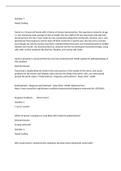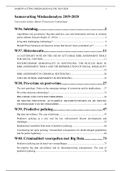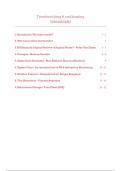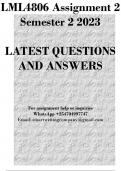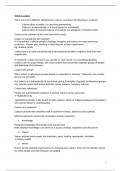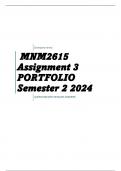From 55BC to about 450 AD most of Britain was under Roman rule. In about 450, the
Romans withdrew from Britain in order to defend what remained of their continental empire.
The British were attacked by the Celts of Scotland and Ireland, the Angles, Saxons and
Jutes. Also the Huns made an appearance and drove the other tribes away.
After a period in which they plundered a lot, the Anglo-Saxon raiders became settlers. They
established several kingdoms. Wales, Scotland and Cornwall remained beyond Anglo-
Saxon rule and the Romano-British continued to hold power over those pieces of land.
We know more about the ruling classes than about the farmers. But we do know they traded
with Scandinavia and Friesland.
Most famous work in Old English is Beowulf. Shorter poems are also preserved, as are
translations of Latin texts. From the ninth century, monks and clerks started to
maintain chronicles: annual records of contemporary events.
The first recorded attack made on Britain by Scandinavian Vikings took place in 793.
Throughout the following century, Vikings raids continued. Wealthy monasteries were
consequently prime targets.
Right up to the eleventh century, the Scandinavians, Anglo-Saxons and Normans continued
to fight over the English crown. Duke of Normandy saw an opportunity to claim the throne: he
crossed the channel with his army and defeated the Anglo-Saxons at the Battle of
Hastings in 1066. The Norman period of English history began.
Sutton Hoo is the burial site of a seventh-century king, laid to rest in a ship twenty-seven
metres long. In the boat were also weapons and jewellery.
King Alfred of Wessex: Important king. He defeated the Danes in 878, halting the advance
of Viking rule. He made a peace treaty with the Danes, reorganised the Anglo-Saxon army
and created a line of fortifications along the border. He also built a fleet of ships; the English
navy.
He also convinced to translate Latin texts into Old English, so that more people could read it.
Bede: famous monk who wrote one of the most important historical works of the Early Middle
Ages (in 731). King Alfred (871-899) regarded the book as sufficiently important to the
development of his country. He insisted on translating the texts.
Beowulf was the work of Anglo-Saxon literature. It is the oldest European text in a common
people’s language. It is not known who wrote Beowulf or how old the poem is, but it seems
from somewhere around the sixth century.
Few kings managed to remain in power for long: they tended to die young (often in battle) or
were deposed by rivals. Loyalty was rewarded with gold. It meant the common people were
expected to be willing to die for their lords.
Beowulf’s storyline centres on a hero of enormous strength, who acquires fame by fighting
various monsters. It begins with the family history of the Danish King Hrothgar. Beowulf
travels from Geatland to Heorot, to slay the bloodthirsty monster. A few years later he is king
and he tackles a dragon. All his ‘loyal’ comrades flight except for Wiglaf. He is injured by the
dragon and dies of his wounds. The poem ends with Beowulf’s cremation on an enormous
pyre.
Late 9th century – 12th century: The era of King Alfred the Great. The chronicle became
established as a literary genre in England. Some were very short, others were quite detailed.
A chronicle could never be finished, because every year there were further noteworthy
events.
Chronicles were usually written in monasteries by monks, who did not put their names in
their work.
The events recorded in the Anglo-Saxon Chronicle span more than a millennium: the first
relates to the year 1 AD, the last to 1154 AD.
, Engels literatuur samenvatting The Middle Ages
For events prior to the ninth century, they relied mainly on established sources, such
as earlier chronicles, or oral sources.
King Harold (1066): He came from York to Westminister because the king passed away.
There was a sign in the heavens. It was a star. The Northmen almost won the land, but King
Harold came upon the Northmen by surprise. The Northmen flight but most of them were
killed.
He let the son of the Norse’s’ king live and let him swear an oath of peace. He then let the
remaining Northmen leave with 24 ships.
The first riddles, written in Latin, were introduced to England by one Abbott Aldhelmat the
end of the 7th century.
The Anglo-Saxon riddle is based on the device of presenting one object/phenomenon as
another. Many riddles contain errors as a result of being copied incorrectly or not properly
understood by the people who passed them on.
The riddles are very varied in their form and content: they differ in length and in style. Most
contain subjects as tools, weapons, animals, food, drink and natural phenomena.
THE LATE MIDDLE AGES: 1066-1500
William the Conqueror defeated the Anglo-Saxon army at The Battle of Hastings. The
society became divided into three classes: the nobility (French-speaking), the clergy (Latin)
and the commoners (English). The first two groups held almost all the land, which was
worked by the farmers from the third group. The first king of England who actually spoke
English was Edward III, who did not reign until 1327 to 1377!
To demonstrate their power and protect themselves against possible rebellion, the Norman
lords built castles.
The population expanded rapidly, men began building churches in the Romanesque style
imported from France. Religion played an important role in society: life on earth was
regarded as merely a precursor to the ever after. The Latin motto: Memento Mori (remember
that you will die).
The First Crusade (1095) was organised with the aim of recovering the Holy Land from the
Saracens and defending Christendom. The Second Crusade (1147) came after that and
many more. All a Crusader’s sins were automatically forgiven, so many criminals and social
misfits set sail for Jerusalem.
A new dynasty for the crown in 1154: The Plantagenets. They wanted more power and
wealth for themselves, at the expense of the nobility and the Church. This almost led to civil
war, when several nobles rose against the tyranny of King John. In 1215, he was forced to
sign the Magna Carta, a contract under which the nobility were granted certain privileges in
return for their loyalty.
Edward III claimed to be heir to the French throne through his mother’s family and declared
war on France in 1337, there was open hostility for more than a hundred years: The
Hundred Years’ War. The fighting came to an end in 1453, with the English left in control
only of the area around Calais. However, it was not until 1801 that the English finally gave up
their formal claim to the French throne.
Midway through the 14th century, the population growth came to an end. The cause was
the Plague, also known as the black death: a highly virulent disease spread by rat fleas,
whose host animals came from Asia to Europe in the holds of ships. England was first hit
in 1348. Nearly half the population died. This caused a major economic downturn.
The lower classes demanded greater rights because they felt more self-confident, and began
an open rebellion in 1381. King Richard II (14 years) managed to put the revolt down, but
was severe as ever with the lower classes.




